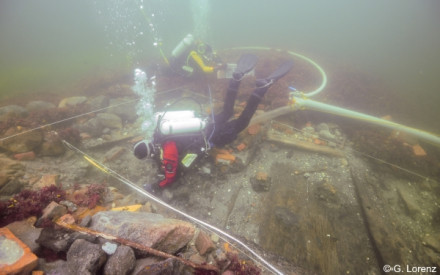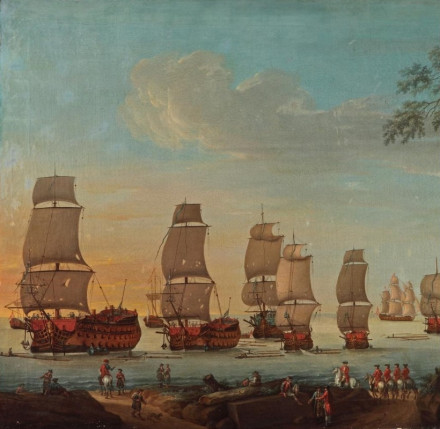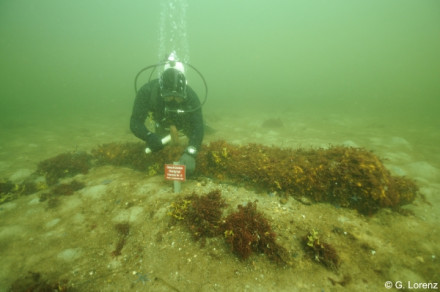History
Background
The Princessan Hedvig Sophia was built as the Dronning Ulrike Eleonora. She was the first ship of al new large class in the Swedish navy. In 1694, this name passed on to a different newly built ship and the ship was called Wenden for a while. A month later it got her final name.
Demise
The ship participated in the Great Northern War (1700-1721). In April 1715 a Swedish squadron of four ships of the line and two frigates commanded by rear admiral Carl Hans Wachtmeister on the flagship Princessan Hedvig Sophia received the royal order to intercept Danish supply ships. At the Battle of Fehmarn in the Baltic Sea on 24th April 1715 the Swedish squadron was intercepted by a larger Danish squadron under the command of Christian Carl Gabel who commanded twice the number of ships and gained the additional advantage of the windward side. In an attempt to evade capture, Wachtmeister ordered his ships to jettison their guns and ammunition, to run aground and to cut masts to prevent the ships from falling into the hands of the Danes. His plan was foiled, as all ships of his squadron could be captured and set afloat again, with the exception of his flagship. This episode of the Great Northern War contributed to the end of Swedish hegemony in the Baltic Sea region – the dominium maris baltici.
Rediscovery
The ship fell into oblivion in the following centuries, but since 1970 several of the jettisoned guns were rediscovered and some of them salvaged – at least one illicitly. In March 2008, the wrecksite – only visible by its pile of ballast stones, which could be also mistaken for glacially deposited boulders – was identified as such and the news spread in the wreck-diving community. It was expected that artefacts from the site could be stolen, so the State Archaeology Department of Schleswig-Holstein (ALSH) issued legislation to include the wrecksite into a designated protection zone, which covers not only the wreck and the jettisoned guns and ammunition in the surrounding area, but also an inundated Mesolithic settlement area.
In 2010-2011, the wrecksite was excavated in two consecutive field schools with university students in a collaboration between the ALSH, the maritime programme of the University of Southern Denmark (SDU) and the University of Kiel under the supervision of Dr. Jens Auer (SDU). The ballast stone heap was removed to excavate sections of the wreck.

Description
Yard: navy yard of Karlskrona.
Building master: Francis Sheldon the Younger.
Armament: 80 guns (or 76 according to different sources).

| Master | Carl Hans Wachtmeister |
|---|---|
| People on board | 425 |
| Length | 155 ¼ feet (47.3 m) |
| Width | 40 feet (12.2 m) |
| Displacement | 1650 ton (825 last) |
Status
Only the bottom section of the wreck has survived due to the shipworm activity, since it was covered under sediment and a pile of ballast stones. While the analysis of the hull remains provided only limited details on ship's construction, the most interesting aspect of this wrecksite is its archaeological find assemblage, which includes personal belongings of the mariners like clay pipes, tableware and parts of games, parts of the rigging like parrel trucks and blocks, as well as arms and ammunition, thus providing a fascinating snapshot in time of an early 18th century shipboard community. The archaeological assemblage is not only limited to the wreck site itself but also its surroundings, as the Princessan Hedvig Sophia and other ships of the Swedish squadron jettisoned arms and cargo before they were run aground.
As the first archaeological protection zone to incorporate a seabed area in Schleswig-Holstein, this site set a precedent for the state. In a further precedent, this area was selected in 2019 as the first underwater site for a monitoring scheme as part of the established honorary confidants-scheme (Vertrauensleute-Richtline) for the protection of heritage acting on behalf of the ALSH.

References
- Auer, J. (2010).
Fieldwork Report: Princessan Hedvig Sophia 2010 (= Esbjerg Maritime Archaeology Reports 3).
Esbjerg, University of Southern Denmark. - Auer, J. & Schweitzer, H. (2011).
Fieldwork Report: Princessan Hedvig Sophia 2011 (= Esbjerg Maritime Archaeology Reports 4).
Esbjerg, University of Southern Denmark. - Auer, J. & Segschneider, M. (2012).
Loss and rediscovery of the Swedish „Prinsessan Hedvig Sophia" in the Baltic Sea near Kiel, Germany.
N. Günsenin (ed.), Between Continents (= Proceedings of the Twelth Symposium on Boat and Ship Archaeology, Istanbul 2009), 81-86.
Istanbul. - Jens Auer (2012).
The wreck of Princessan Hedvig Sophia.
Skyllis, 12.
pp 57-63.